Bunkers - the indestructable symbols of a dictator's paranoia
Many travelers, who happen to visit Albania for the first time, are puzzled by the numerous cement bunkers built everywhere in the country; virtually anywhere. We Albanians, who grew up with bunkers surrounding us, oftentimes ignore their existence, and they sort of become invisible. Until a traveler asks about them. And it is among the most frequent and the first questions they ask.
Albania went through 47 years of the strictest communist dictatorship in the Eastern bloc. My first post was about it, and you can read about it here. But the bunkers, they deserve their own, undisturbed post. Official data say that the initial plan was to build 221 143 bunkers, but only 173 371 were built; from 1975 until 1983. Their construction was largely funded by the Albanian communist ally, China, although funding was interrupted when Albania broke ties with them in 1978. The Albanian economy suffered huge losses from cement and iron used for bunker construction which could have been used otherwise for infrastructure or housing.
Mehmet Shehu, the then-Prime Minister, impressed after a visit in North Korea where he saw the bunkers that were built to protect both civilians and the army in case of an enemy attack, was the architect of Albania’s bunkerisation. His proposal was strongly supported by dictator Enver Hoxha, since it was the best solution against his paranoia. Shehu brought together a group of experts in the middle of seventies to work on the fortification project. They studied the three most famous fortification lines: the Maginot Line along the eastern frontier of France built by French in their borders with Switzerland, Germany and Luxembourg during the 1930s; the Mannerheim Line of fortifications across the Karelian Isthmus facing Leningrad built by Finland against the USSR in the days of the Winter War; and the Siegfried Line built by Germany in northern France during the WWI.
Both soldiers and civilians worked for their construction, and many died in accidents at work. Needless to say that such news never made it to the public, and the identities of those killed during the bunkers construction process remain still unknown. They built approximately 21 000 bunkers per year. The bunkers are generally divided into three categories:
- Triple bunkers (groups of three bunkers connected to each other through tunnels);
- Bunkers built in strategic locations, which are either found isolated or concentrated in areas such as borders or gulfs;
- Linear bunkers, which means groups of bunkers built side by side in a line depending on the geographical conditions.
Size of bunkers also varies from small, medium, and large, for reference convenience. Small bunkers could hold one person, and they mainly fall under the triple bunkers category. Medium bunkers could hold up to four persons, or a family. Large bunkers on the other hand, were designed to host up to ten persons comfortably, along with heavy armament and artillery. Otherwise referred to as “cement mushrooms”, they were almost all pre-fabricated in slices and transported to the site where they were assembled and monolitized using cement. The bunker is composed of three main parts: the round dome; the cylindrical room which was placed beneath the dome and also supported its weight; and the surrounding outer wall which was filled with earth.
Bunkers underwent all kinds of tests and examination; including missiles. Animals and livestock were sheltered inside the bunkers for the tests, although many insist that sometimes engineers and army generals were also subjected to stress tests inside the bunkers. A good movie by Albanian Director Kujtim Çashku on the subject, which includes the eventual involvement of the main character in a bunker stress test was made in 1998, Kolonel Bunker, and I recommend it to every foreign traveler who is puzzled by bunkers (IMDb entry here).
We still have them. Everywhere. Some of them have been vandalized, others brought to all kinds of uses, and only a very few number of them have been destroyed. They seem indestructible. And they just stand there, as a stubborn reminder of what the paranoia of a dictator can do to an entire country.
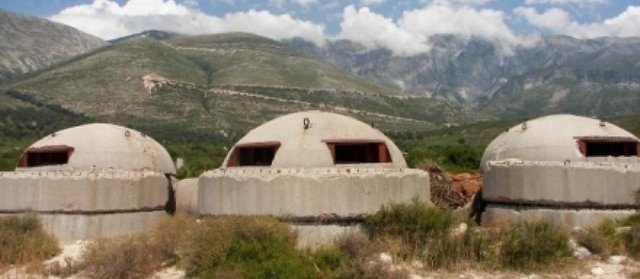
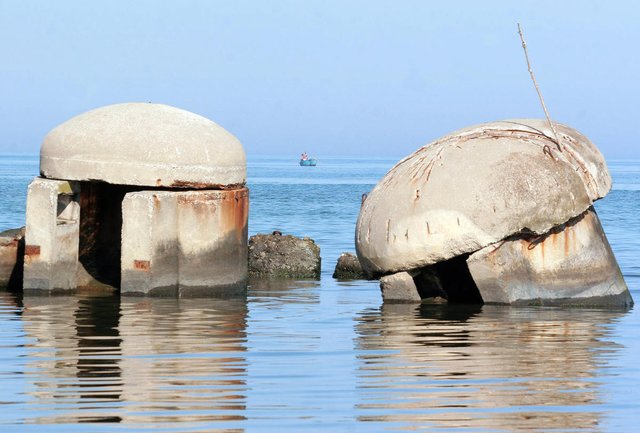
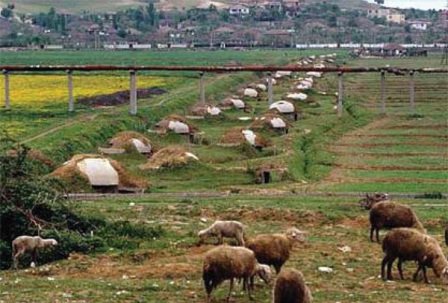
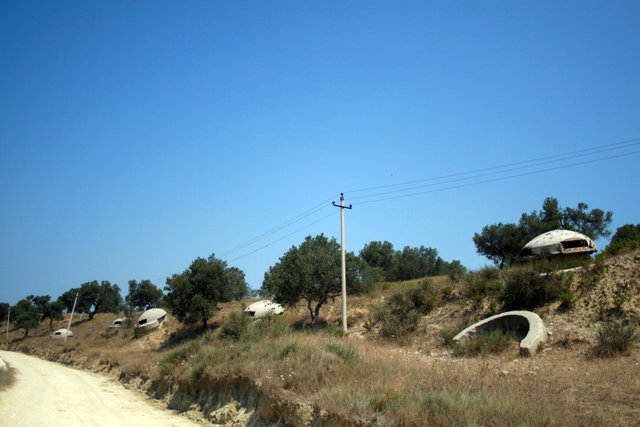
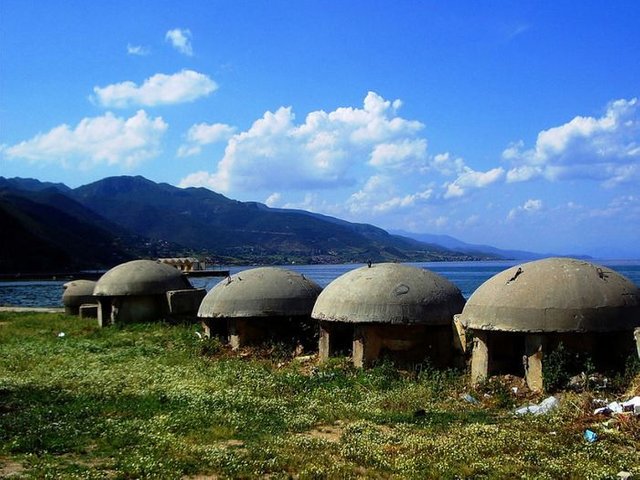
Very interesting post, buddy.
Thank you! :)
This is so interesting! Thanks for sharing, it is strange what dictators get in their minds to do.
Thank you. It is very strange indeed. I will keep posting more on this subject.